A Joint Expedition for Science and Conservation of the Sicklefin Devil Ray
This summer, I had the privilege of joining an expedition to Santa Maria, Azores, to monitor the remarkable aggregations of Mobula tarapacana at the Ambrosio seamount. I was invited to participate as a member of Manta Catalog, working alongside Ana Filipa Sobral (Pipa). The expedition was a collaborative effort between Manta Trust and Manta Catalog Azores, and was funded by Carl F. Bucherer.
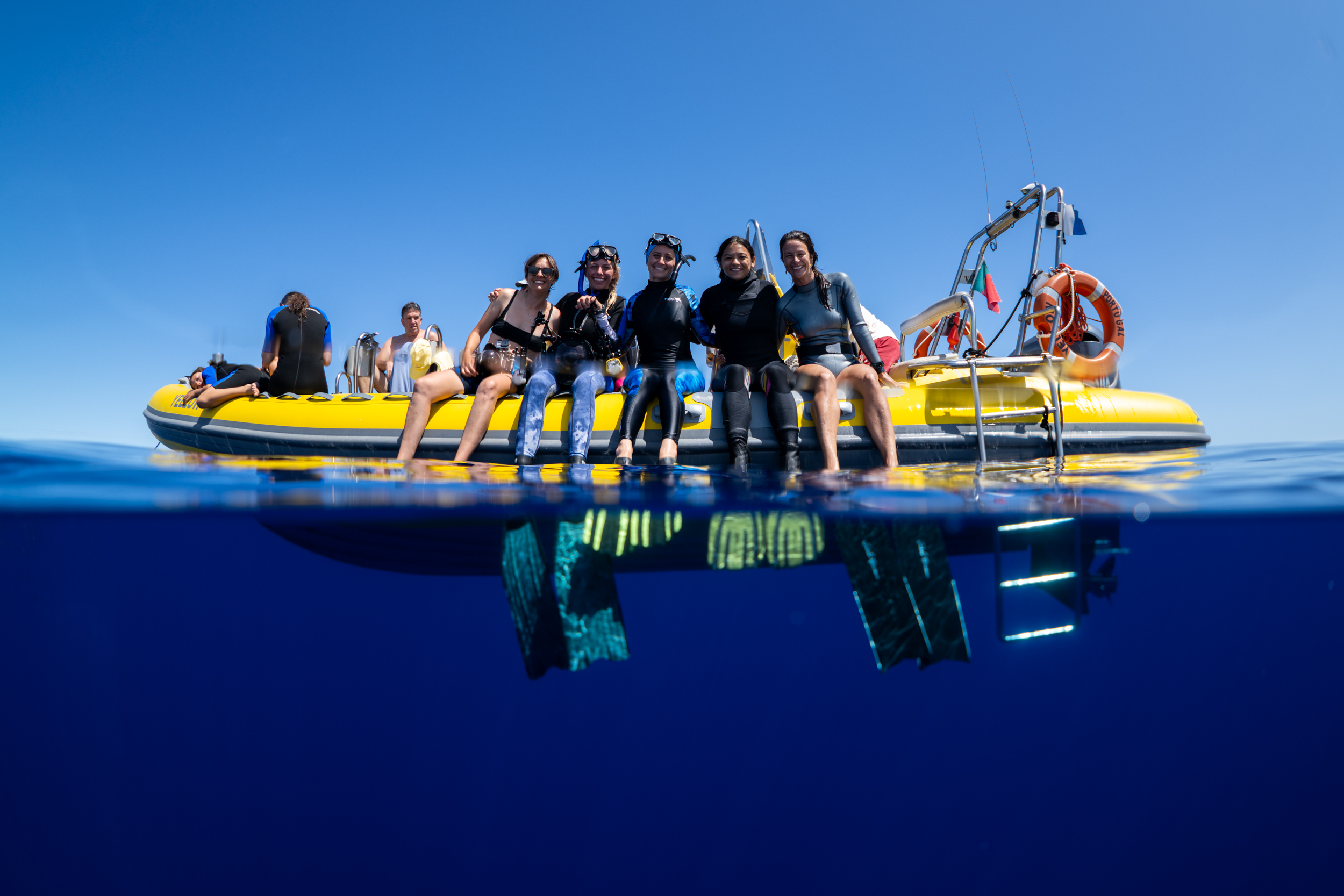
A Team Photo on the Research Boat off of Santa Maria, Azores. Photo © Jasmine Corbett
Both Pipa and I have previously been Project Leaders fortunate to receive the Small Grant from the Save Our Seas Foundation, support that has been pivotal in shaping our paths as mobulid researchers. At the same time, Save Our Seas is a long-standing supporter of the ongoing work of Manta Trust. Both initiatives share the same mission: advancing research and protection of mobulids. By uniting our efforts in this expedition, we were able to strengthen collaborations and share methodologies to contribute to the long-term conservation of Mobula tarapacana.
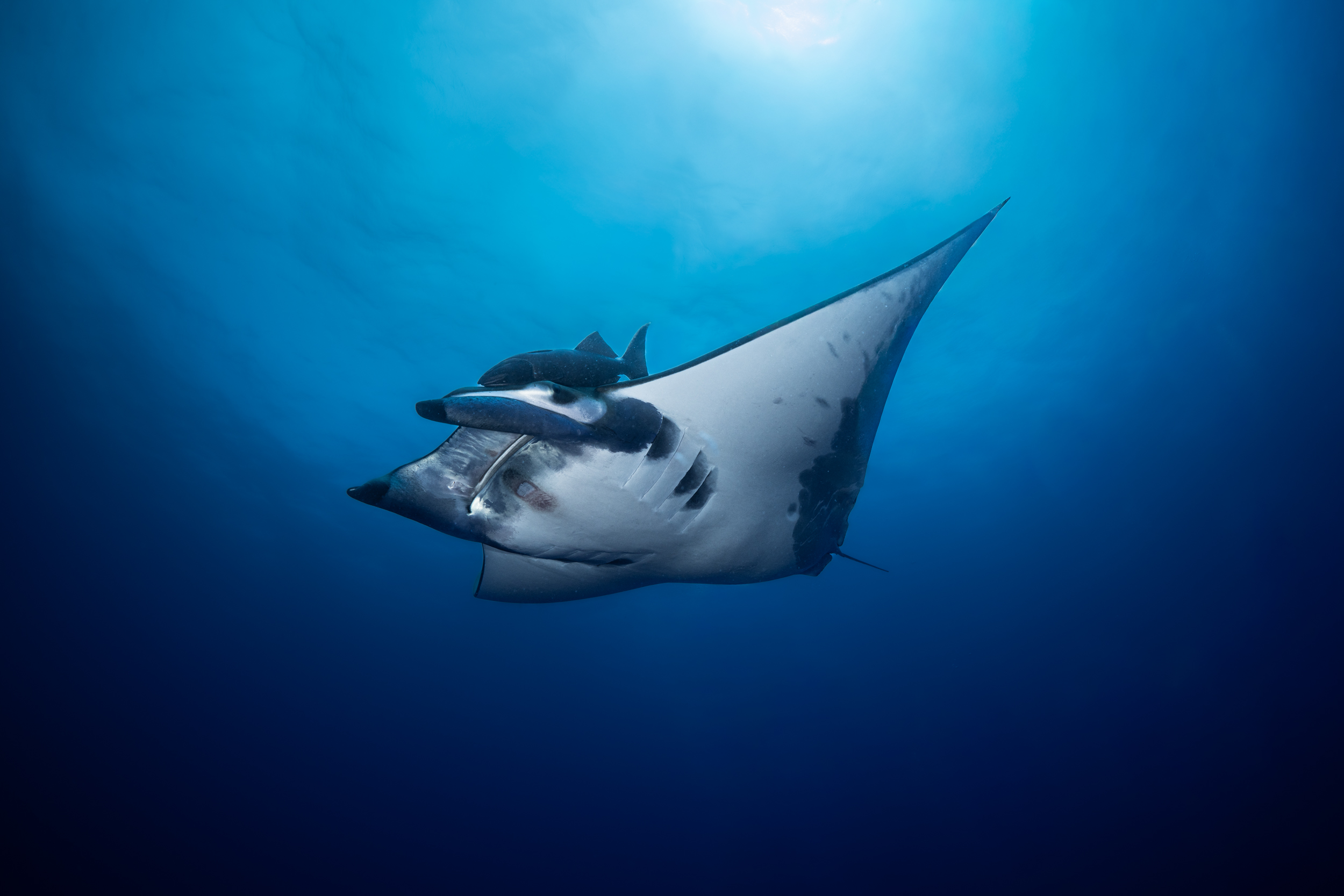
A ray photographed in the Azores. Photo © Jasmine Corbett
My earlier research on mobulas in the Canary Islands, funded by Save Our Seas, helped me build the collaborations and experience that ultimately led me to join this expedition. In the Canaries, my work relies heavily on citizen science, meaning most of my “encounters” with mobulas had been through other people’s eyes and ears. During this expedition, I finally got to experience a close-up encounter with this intelligent and curious animal, with individuals circling and approaching us repeatedly, as if equally intrigued. Could any of them have been visiting the Canaries before? That is a question we hope to be able to answer!
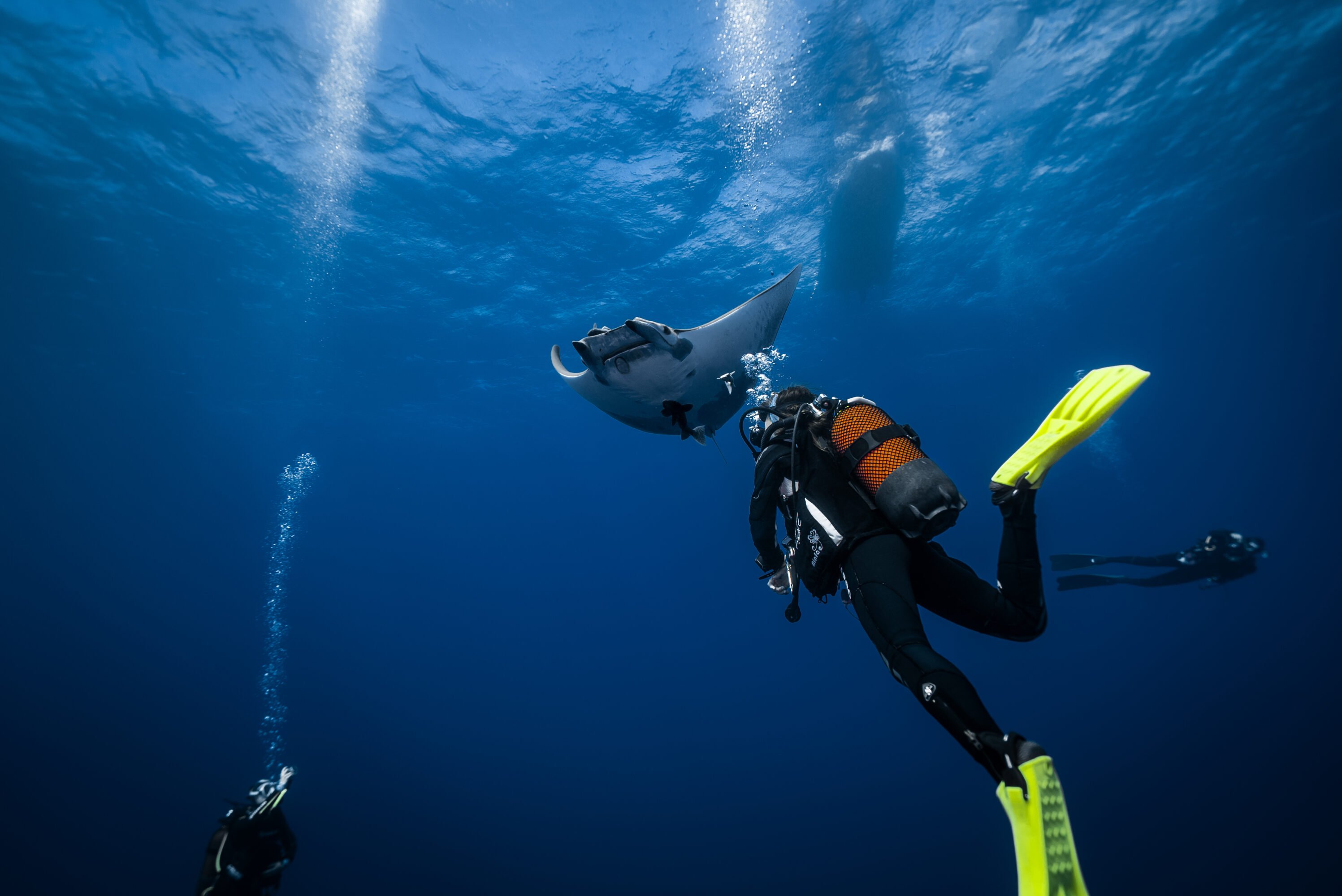
Alicia with a sicklefin devil rays, Mobula tarapacana off of Ambrosio Santa Maria, Azores. Photo © Leila-Scheltema
Ambrosio itself is a special place, a seamount rising from the depths of the mid-Atlantic. Out in the middle of the blue (that deep, endless blue that defines the great depths of the Atlantic), patient divers wait for the unknown to appear. The wait can mean clinging tightly to the line in strong currents, or floating in the stillness when the sea is calm. The surface gives no guarantees; a day of mirror-like calm or rolling waves says little about what you will find below.

The research boat out at sea off of Santa Maria, Azores. Photo © Jasmine Corbett
And then, it happens. From the distance, a flock of mobulas appears, their wing-edges slicing through the water like flying birds. This is a crazy place, in a single dive, you might find yourself surrounded by dozens of mobulas, shaded by the immense silhouette of an eight-metre whale shark passing overhead, while the distant calls of bottlenose dolphins echo through the water. Within the vastness of the ocean, all is to be found in Ambrosio.
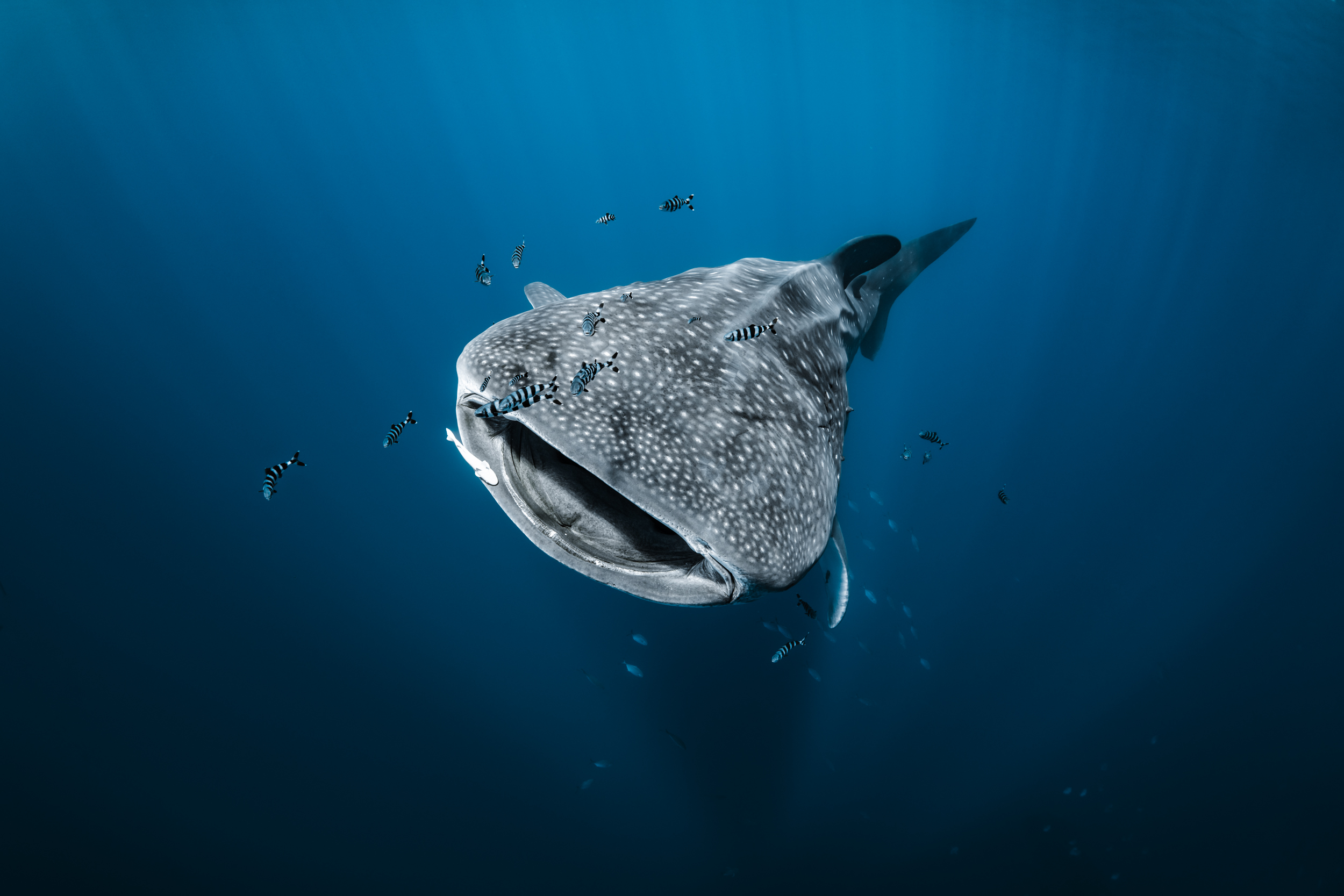
A whaleshark sighted off of Santa Maria, Azores. Photo © Jasmine Corbett
Beyond the wildlife, the people made this expedition truly special. I had the privilege of working with some of the leading figures in the mobula research and awareness community, learning directly from them and exchanging ideas for future work. Both my colleague Pipa and the Manta Trust team have been an inspiration to me. Women and men, strong and unique, facing different challenges in the study and protection of mobulids, with knowledge and passion guiding their efforts.
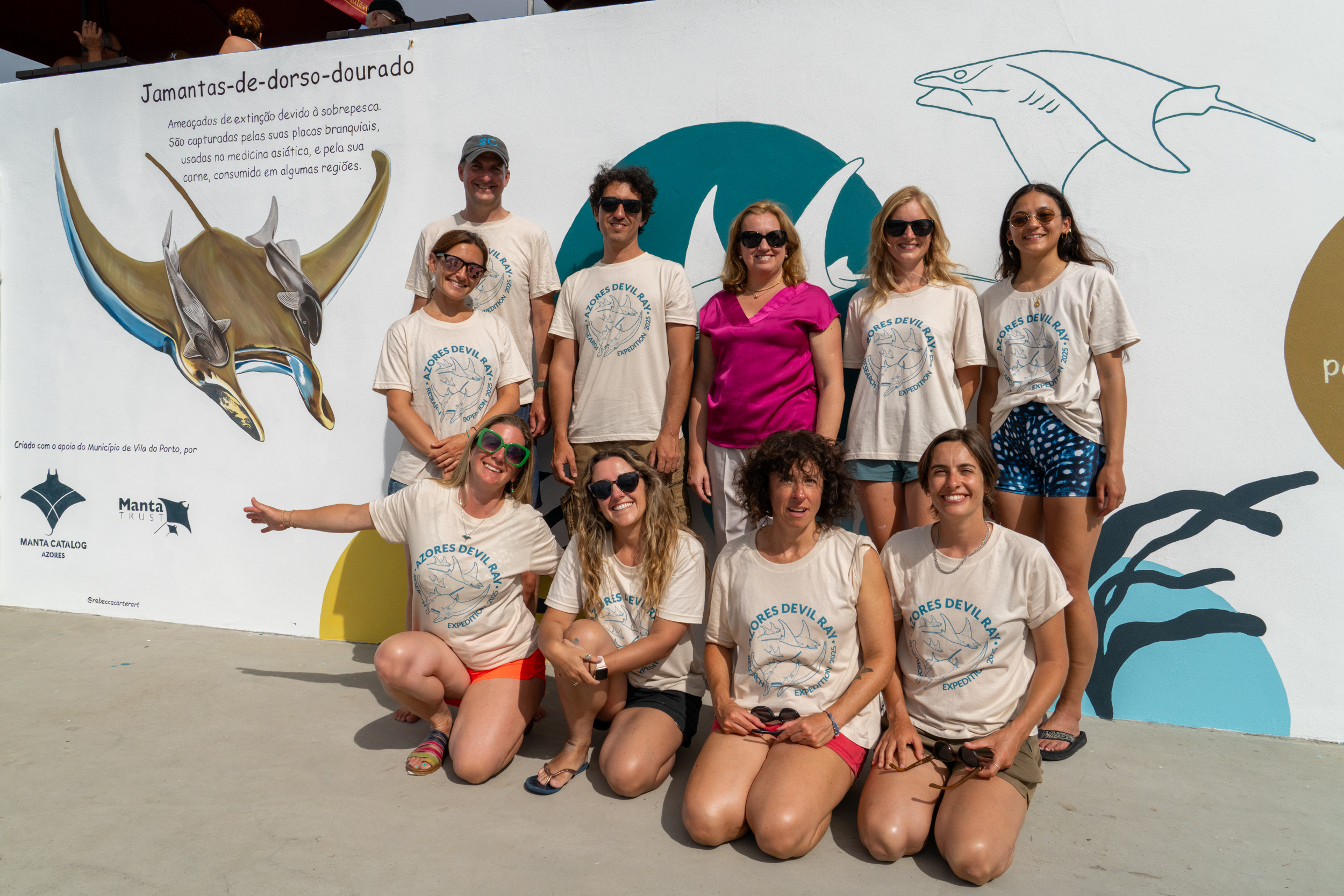
Mural painting on Santa Maria. Photo © Jasmine Corbett
Now that we have returned to our homes scattered across the globe, the teams from Manta Catalog and Manta Trust want to express our gratitude to the Save Our Seas Foundation for supporting our work. This collaboration stands as an example of how strategic partnerships can amplify our impact in marine conservation, and, for me personally, this has been an unforgettable chapter in my career.

A group of sicklefin devil rays spotted off of Ambrosio, Santa Maria, Azores. Photo © Guy Stevens | The Manta Trust
